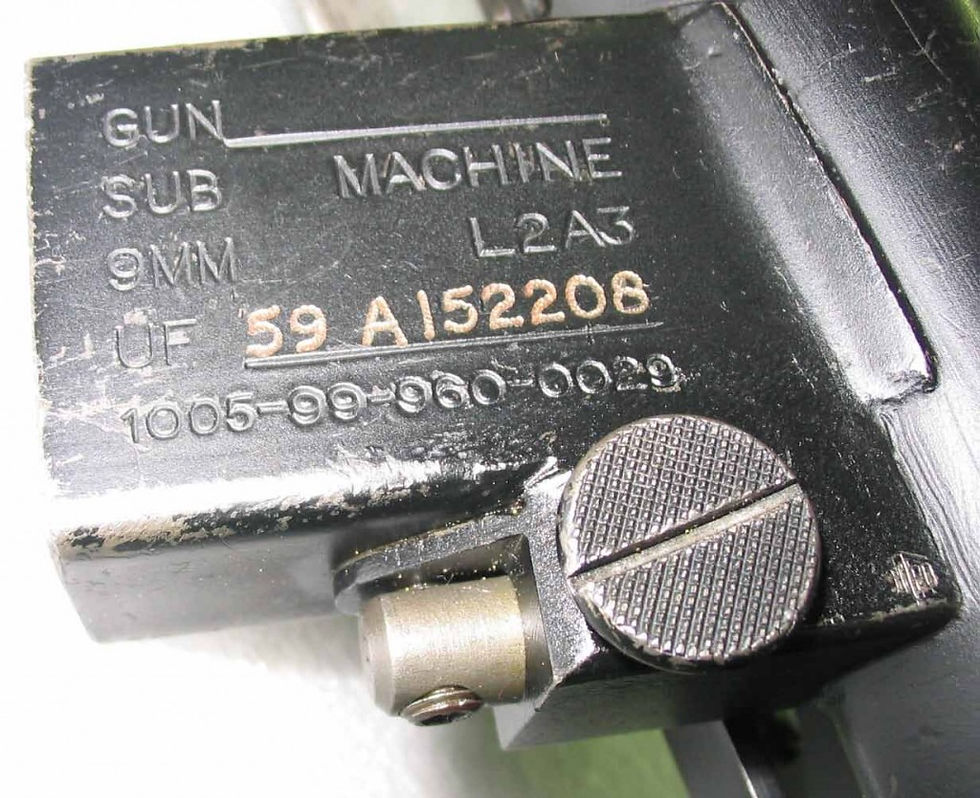
The Patchet Sterling - a history. special thanks to www.sterlingl2a3.com









Magazine well markings:
Sterling Armament Company produced approximately 16,000 military contract L2A3 submachine guns between 1956 and 1959. At the same time, a government owned facility, Royal Ordnance Factories Fazakerley, secretly started their own production, cutting into Sterling’s business. After a lengthy court battle, it was decided, ROF Fazakerley could finish the Ministry of Defense’s order requirements, while Sterling would get exclusive rights to market and sell the gun overseas. This export gun became known as the commercial MK4 with distinctive wrinkle coat paint finish and markings.
Fazakerley’s output was approximately 164,000 guns between 1956 and 1960-at which time the production line was permanently closed down. Tooling, fixtures, equipment, scrap receiver casings & parts were purchased by Sterling.
Sterling continued to supply spare parts and magazines to the MoD up until 1988 as a sole source supplier. The markings and marking requirements between the two gun manufacturers varied widely. For example, commercial barrels were proofed at the London Proof House while UK military contract barrels and breech blocks were all proofed at RSAF Enfield. For the most part, inspector and acceptance stamps are widely used during individual component production and final assembly. When Sterling commercial parts were sent to the MoD for use as spares, they could have additional acceptance markings applied by the MoD.



